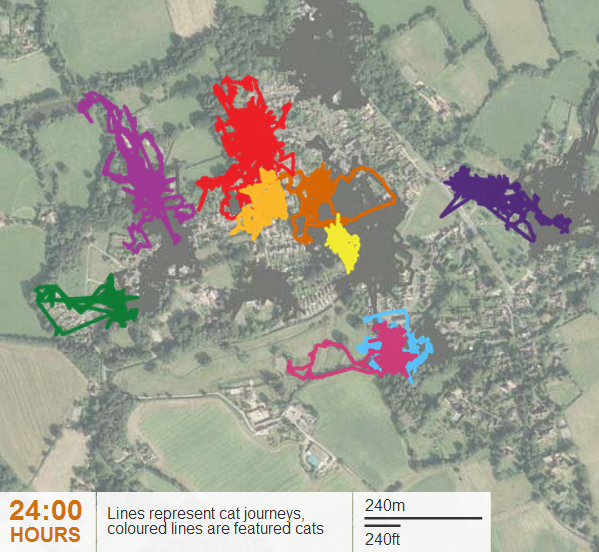 If you cannot afford to run a massive surveillance programme NSA style, you can comfort yourself by spying on your own cat.
If you cannot afford to run a massive surveillance programme NSA style, you can comfort yourself by spying on your own cat.
Ever wondered what your cat spends its time doing when you’re not around? Armed with GPS tracking devices and micro-cameras, a team from BBC Two’s Horizon programme in collaboration with the Royal Veterinary College set off to a Surrey village to find out. (BBC Two Horizon, “The Secret Life of the Cat“)
Let me tell you something: There is a clear advantage on cat espionage. Chances are that cat mobility traces might be as unique as human’s and you can publish your findings in a scientific paper without ruining your quiet life as a geek, as it will certainly happen when you decide to break the Espionage Act. And just in case… wouldn’t you bet that at least some cats might harbour sinister feelings of resentment?
___________________
(1) In a recent paper, “Unique in the Crowd“, a group of researchers show that human mobility traces are highly unique:
In a dataset where the location of an individual is specified hourly, and with a spatial resolution equal to that given by the carrier’s antennas, four spatio-temporal points are enough to uniquely identify 95% of the individuals. Uniqueness of mobility traces decays approximately as the 1/10 power of their resolution. Hence, even coarse datasets provide little anonymity. (Yves-Alexandre de Montjoye, César A. Hidalgo, Michel Verleysen & Vincent D. Blondel, “Unique in the Crowd: The privacy bounds of human mobility“, Scientific Reports 3, Article number: 1376 doi:10.1038/srep01376, 25 March 2013)
[…] following the approach to economic complexity put forward by Geoffrey West, César Hidalgo, and others, Naudé argues that there are complexity brakes on entrepreneurship that may […]